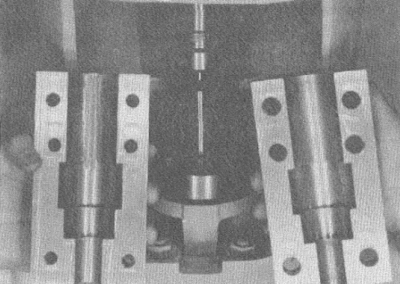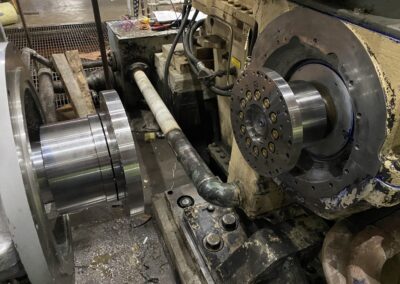
Why Machine Alignment Matters
Precision machinery and coupling alignment is an indispensable aspect of machinery maintenance, ensuring optimal performance and longevity of industrial equipment. Couplings are critical components that transmit power between two shafts, and their misalignment can lead to a cascade of issues affecting efficiency, reliability, and maintenance costs.
Importance of Coupling Alignment
Couplings serve as the mechanical linkage between rotating shafts in various applications, ranging from automotive to heavy industrial machinery.

Accurate alignment is crucial to mitigate:
- Vibration and Stress: Misalignment induces undue stress on the coupling and connected equipment, resulting in increased vibrations, premature wear, and potential breakdowns.
- Power Loss and Inefficiency: Misaligned couplings lead to power loss due to increased friction and reduced mechanical efficiency, impacting overall system performance.
- Maintenance Costs: Improper alignment accelerates wear and tear on bearings and seals, necessitating frequent repairs and replacements, thereby escalating maintenance expenditures.
As an example, look at this story from a plant that suffered from constant bearing failures, even when they performed routine alignments.
Understanding Coupling Alignment Techniques
CouplingCorp, a leading authority in precision coupling technology, emphasizes the significance of precise alignment methods in optimizing machinery performance. Their alignment techniques typically include the following:
- Shaft Alignment Tools: Employ state-of-the-art laser alignment tools or dial indicators to measure and correct angular and offset misalignments accurately.
- Thermal Growth Compensation: Accounting for thermal expansion in machinery components, especially in high-temperature environments, to maintain alignment under varying operating conditions.
- Expert Guidance and Training: Providing comprehensive resources, training, and expert guidance to equip maintenance personnel with the skills to conduct precise alignment procedures effectively.
There are many manufacturers of precision alignment equipment. They offer different features and different levels of accuracy, depending on the type of application. Here are some examples of laser manufacturers:
Easy Laser Pruftechnik Ludeca and many others.
Extreme Flexibility in High-Speed, High-Torque Applications
The FLEXXOR shaft coupling, manufactured by Coupling Corporation of America, has an exclusive holed diaphragm design that sets the standard for coupling flexibility. FLEXXOR shaft couplings are designed to provide extreme flexibility in high-speed and high-torque applications. The angular and axial spring rates are far lower than those of any other flexible shaft coupling in the industry. FLEXXOR shaft couplings have been consistently the most flexible and durable on the market. Its unique holed diaphragm design allows for several degrees of misalignment while still transmitting the highest torque values.
The FLEXXOR diaphragm works like a bicycle wheel. The tension in the “spokes” transmits the torque from inside to outside. The thin, hole-filled diaphragm flexes easily to accept angular and axial misalignment. Power plants, refineries, and large process plants use our FLEXXOR shaft couplings for applications that include high-speed pumps, gas turbines, centrifugal compressors, aircraft applications, and API 671 applications.
The following videos show how low the spring rates of the FLEXXOR are. It is incredible how easy it is to flex the coupling both in the axial and angular directions.
Conclusion
In conclusion, precision coupling alignment is not merely a maintenance task but a strategic investment in machinery reliability and operational efficiency. CouplingCorp’s expertise and dedication to advancing alignment technologies underscore the pivotal role of accurate alignment in enhancing overall system performance.
As industries evolve, prioritizing precision alignment techniques becomes paramount for ensuring machinery reliability, minimizing downtime, and optimizing operational costs.
For more in-depth insights and resources on coupling alignment, visit CouplingCorporation’s website.
Contact Us Today
"*" indicates required fields
Recent Posts


Lady and the Clamp

Why Machine Alignment Matters

Vibration Transmission in Couplings

I Like Big Hubs (and I cannot lie)

Circ Water Success

Surprise BSE Change

How CCA Saved a Customer Millions

FLEXXOR Coupling Reduces Vibrations in Gas Compression Application

New Year’s Resolution: Coupling Weight Loss

Downtime – Way Up in the Sky

